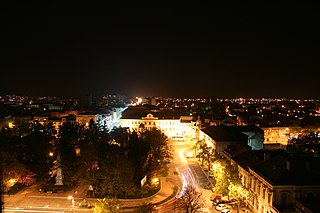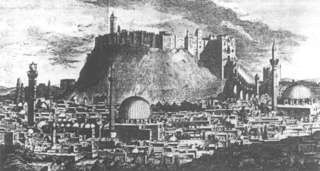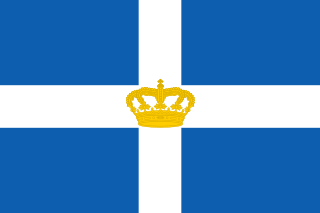In economics, stagflation is a situation in which the inflation rate is high or increasing, the economic growth rate slows, and unemployment remains steadily high. Stagflation, once thought impossible, poses a dilemma for economic policy, as measures to reduce inflation may exacerbate unemployment.

A suburb is an area within a metropolitan area which is predominantly residential and within commuting distance of a large city. Suburbs can have their own political or legal jurisdiction, especially in the United States, but this is not always the case, especially in the United Kingdom, where most suburbs are located within the administrative boundaries of cities. In most English-speaking countries, suburban areas are defined in contrast to central city or inner city areas, but in Australian English and South African English, suburb has become largely synonymous with what is called a "neighborhood" in the U.S. Due in part to historical trends such as white flight, some suburbs in the United States have a higher population and higher incomes than their nearby inner cities.
The Price Revolution, sometimes known as the Spanish Price Revolution, was a series of economic events that occurred between the second half of the 16th century and the first half of the 17th century, and most specifically linked to the high rate of inflation that occurred during this period across Western Europe. Prices rose on average roughly sixfold over 150 years. This level of inflation amounts to 1.2% per year compounded, a relatively low inflation rate for modern-day standards, but rather high given the monetary policy in place in the 16th century.

Trabzon, historically known as Trebizond, is a city on the Black Sea coast of northeastern Turkey and the capital of Trabzon Province. Trabzon, located on the historical Silk Road, became a melting pot of religions, languages and culture for centuries and a trade gateway to Persia in the southeast and the Caucasus to the northeast. The Venetian and Genoese merchants paid visits to Trabzon during the medieval period and sold silk, linen and woolen fabric. Both republics had merchant colonies within the city – Leonkastron and the former "Venetian castle" – that played a role to Trabzon similar to the one Galata played to Constantinople. Trabzon formed the basis of several states in its long history and was the capital city of the Empire of Trebizond between 1204 and 1461. During the early modern period, Trabzon, because of the importance of its port, again became a focal point of trade to Persia and the Caucasus.

Gjakova or Đakovica is the seventh largest city of Kosovo and seat of Gjakova Municipality and Gjakova District. The city has 40,827 inhabitants, while the municipality has 94,556 inhabitants.

Brăila is a city in Muntenia, eastern Romania, a port on the Danube and the capital of Brăila County. The Sud-Est Regional Development Agency is located in Brăila.

The economic history of France involves major events and trends, including the elaboration and extension of the seigneurial economic system in the medieval Kingdom of France, the development of the French colonial empire in the early modern period, the wide-ranging reforms of the French Revolution and the Napoleonic Era, the competition with the United Kingdom and other neighboring states during industrialization and the extension of imperialism, the total wars of the late-19th and early 20th centuries, and the introduction of the welfare state and integration with the European Union since World War II.

Around 500 BC, the Mahajanapadas minted punch-marked silver coins. The period was marked by intensive trade activity and urban development. By 300 BC, the Maurya Empire had united most of the Indian subcontinent including Tamilakam, which was ruled by Three Crowned Kings. The resulting political unity and military security allowed for a common economic system and enhanced trade and commerce, with increased agricultural productivity.

The economic history of the Ottoman Empire covers the period 1299–1923. Trade, agriculture, transportation, and religion make up the Ottoman Empire's economy.

The economic history of Brazil covers various economic events and traces the changes in the Brazilian economy over the course of the history of Brazil. Portugal, which first colonized the area in the 16th century, enforced a colonial pact with Brazil, an imperial mercantile policy, which drove development for the subsequent three centuries. Independence was achieved in 1822. Slavery was fully abolished in 1888. Important structural transformations began in the 1930s, when important steps were taken to change Brazil into a modern, industrialized economy.
The military of ancient Rome was one of largest pre-modern professional standing armies that ever existed. At its height, protecting over 7,000 kilometers of border and consisting of over 400,000 legionaries and auxiliaries, the army was the most important institution in the Roman world. According to the Roman historian Livy, the military was a key element in the rise of Rome over "above seven hundred years" from a small settlement in Latium to the capital of an empire governing a wide region around the shores of the Mediterranean, or, as the Romans themselves said, mare nostrum, "our sea". Livy asserts:
The Ottoman Empire was one of the most dominant empires in the Mediterranean region, having lasted ~600 years and controlling much of the eastern and southern portions of the Sea. Albert Hourani described the Ottoman Empire as "a bureaucratic state, holding different regions within a single administrative and fiscal system".

The economic history of the Greek World spans several millennia and encompasses many modern-day nation states.

The economy of the Ming dynasty (1368–1644) of China was one of the largest in the world during that period. It is regarded as one of China's three major golden ages. The period was marked by the increasing political influence of the merchants, the gradual weakening of imperial rule, and technological advances.

The economic history of Morocco has largely been charted by the national government through a series of five-year plans. Centralized planning has gradually given way to moderate privatization and neoliberal economic reforms.
The Treaties of Erzurum were two treaties that were ratified in 1823 and 1847 which settled boundary disputes between the Ottoman Empire and Persia.

Aleppo Eyalet was an eyalet of the Ottoman Empire. After the Ottoman conquest it was governed from Damascus, but by 1534 Aleppo was made the capital of a new eyalet. Its reported area in the 19th century was 8,451 square miles (21,890 km2). Its capital, Aleppo, was the third largest city of the Ottoman Empire during the 16th and 17th century.

The Massacre of Aleppo , often referred to simply as The Events, was a riot perpetrated by Muslim residents of Aleppo, largely from the eastern quarters of the city, against Christian residents, largely located in the northern suburbs of Judayde (Jdeideh) and Salibeh. The riot began on the evening of October 17, 1850, and ended two days later on October 19, 1850. The riot resulted in numerous deaths, including that of Peter VII Jarweh, the Syriac Catholic Patriarch.

The Transformation of the Ottoman Empire, also known as the Era of Transformation, constitutes a period in the history of the Ottoman Empire from c. 1550 to c. 1700, spanning roughly from the end of the reign of Suleiman the Magnificent to the Treaty of Karlowitz at the conclusion of the War of the Holy League. This period was characterized by numerous dramatic political, social, and economic changes, which resulted in the empire shifting from an expansionist, patrimonial state into a bureaucratic empire based on an ideology of upholding justice and acting as the protector of Sunni Islam. These changes were in large part prompted by a series of political and economic crises in the late 16th and early 17th centuries, resulting from inflation, warfare, and political factionalism. Yet despite these crises the empire remained strong both politically and economically, and continued to adapt to the challenges of a changing world. The 17th century was once characterized as a period of decline for the Ottomans, but since the 1980s historians of the Ottoman Empire have increasingly rejected that characterization, identifying it instead as a period of crisis, adaptation, and transformation.

The Kingdom of Greece was established in 1832 and was the successor state to the First Hellenic Republic. It was internationally recognised by the Treaty of Constantinople, where Greece also secured its full independence from the Ottoman Empire after nearly four centuries.















